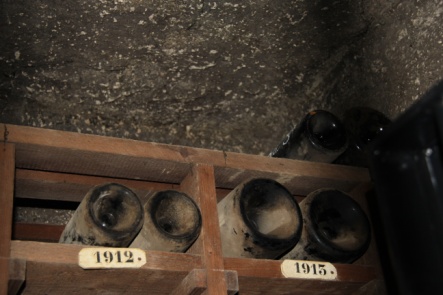Nuit-St-George and Beaune
Posted on Jun 08, 2010 in category
Hotel de Paris in Dijon provided a generous breakfast and the staff were very amiable. ‘Lizzie’ pointed us in the right direction this time to the tidy town of Nuits-St-Georges. Here I had the privilege to be given free range of the museum’s Gallo-Roman collection on the Museum’s closed day of ‘mardi’ or Tuesday. A big thank you must go out to its Director, Laurence Joignerez.
The museum has two floors of exhibits: the cellar floor was the Gallo-Roman exhibit and upstairs an exhibit on France’s participation in the Italian unification.The highlight of the Gallo-Roman exhibit is the display of artifacts taken from a nearby archaeological site called ‘Les Bollards’. This ‘vici’ or town was unique in that a Mithraeum temple was found on site. It is dated from the late 1st-early 2nd century A.D.

Aerial view of Les Bollards- centre of photo
Mithras was a Persian fire god who was very popular in the Roman Army. A few of its main finds are kept in Dijon’s Archaeological Museum that we visited yesterday such as the torch of Mithras’ brother and a lion statue that may have been used as part of the sacrifice of the bull for its blood, a ‘life-giving force’.


Everyday life in Les Bollards is particularly well featured in the museum. Economic activity was rife and metallurgy and ceramic production were evident.


After a quick cafe de crème in Nuits-St-Georges we drove to Beaune- the wine capital of Burgundy. Beaune is famous for its underground ‘caves’ where wine is slowly matured in perfect conditions. Two interesting historical insights came to light on our tour of the biggest cave (5 kilometres of underground storage-biggest in Burgundy-14th century):
- Nothing much has changed since the Gallo-Roman period- in the museum of Nuits-St-Georges I found a funerary stele to a vigneron testifying to the importance of wine in everyday life.

- In their cellar they keep a bottle from every vintage- I noticed an absence of bottles from 1914, the beginning of the WW1.

Following the footsteps of the Gauls and the Gallo-Romans is tiring but also so exhilarating!